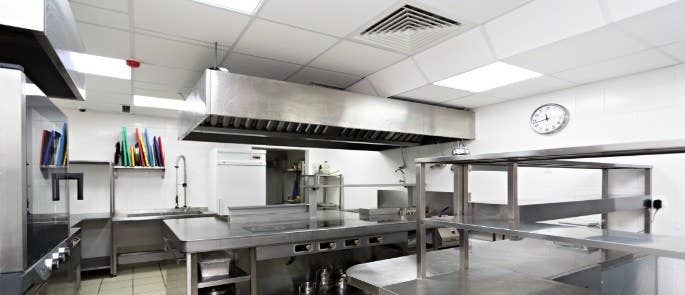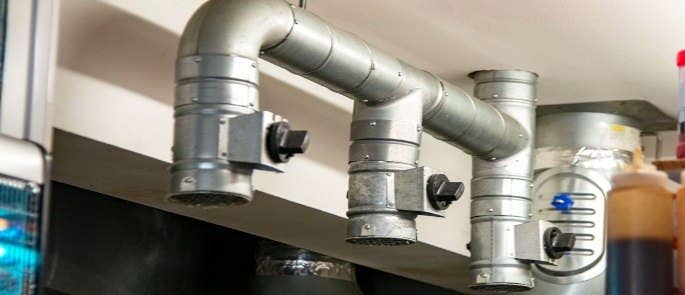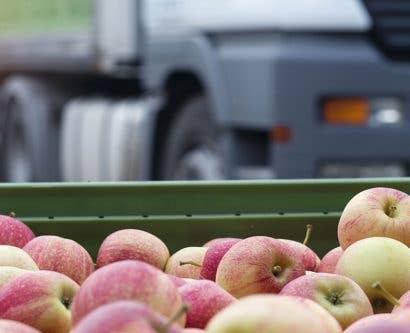A Short Guide to Ventilation in Commercial Kitchens
Commercial kitchens, meaning those used for food business purposes, are subject to extraction regulations. Cooking processes can produce vapours, as well as heat, that need to be managed. An effective extraction system should provide ventilation to remove these fumes and safely re-direct them elsewhere.
The regulations are incredibly important; they are in place to ensure that the working environment is safe for all employees. This guide will cover the commercial kitchen regulations that you must follow, as well as other considerations concerning ventilation.
What are the Extraction Regulations for Commercial Kitchens?
If you are in charge of running a commercial kitchen, you need to ensure that you adhere to extraction regulations. Your Local Authority may not even grant you planning permission if you do not have a sufficient ventilation system planned. Legally, there must be effective extraction in every commercial kitchen.
You must also maintain this system and ensure it is cleaned regularly. Chefs, as well as external specialists, should do this to reduce the likelihood of fires starting. Therefore, you must train chefs how to complete a basic, end-of-day clean of the system, as appropriate.
You must keep a record of the cleaning and maintenance of the extraction system and this must be reviewed by managers. Environmental Health Officers (EHOs) and members of the local authority will inspect all catering establishments. During this visit, the officer will inspect your extraction system. They may ask you to present your corresponding maintenance document as evidence, as well as a Certificate of Cleanliness. The latter document will have been provided by a professional commercial kitchen cleaning company following a thorough clean.

The Workplace (Health, Safety and Welfare) Regulations 1992
One of the main commercial kitchen extraction regulations is the Workplace (Health, Safety and Welfare) Regulations 1992. This makes it a legal requirement for employers to provide ventilation in every enclosed workplace, including kitchens.
The HSE recommends mechanical extraction as a means of achieving effective kitchen ventilation. Ideally, a canopy hood should be installed over all cooking appliances. This will remove vapour, fumes and heat that would otherwise be potentially damaging to employees’ health.
Gas Safety (Installation and Use) Regulations 1998
The Gas Safety Regulations apply to all gas appliances in kitchen premises. Some appliances may require a flue, which is a duct that removes smoke, vapours and heat produced by fires or gas cookers. In some instances, extraction alone may be considered a flue that complies with this regulation. A flue requires an interlocking system that connects the airflow to the gas supply. Therefore, you must ensure this is put in place and maintained properly to keep employees safe at all times. You must further consider how your ventilation and extraction system will affect the use of gas appliances in the kitchen.
The Health and Safety at Work, etc. Act 1974
Under the Health and Safety at Work, etc. Act 1974, employers are legally required to provide and maintain safe working conditions that do not pose a risk to employee health, as is practical. Therefore, if you are in control of the premises you have a responsibility to put reasonable measures in place to ensure the environment is safe to work in.

Why is Ventilation Important?
Crucially, effective ventilation in commercial kitchens is a legal requirement that you must adhere to. The ventilation of kitchens in catering establishments is incredibly important as it creates and maintains a working environment that is comfortable as well as safe. As mentioned, cooking can cause large amounts of vapours and fumes to form. Combined with the sheer heat, this can cause employees in the kitchen to experience discomfort. To manage this, appropriate ventilation systems should be in place to extract fumes to a safer location.
Adequate ventilation:
- Reduces the likelihood of employees experiencing irritation to the eyes or skin. They are also less likely to develop respiratory problems, as a result of not breathing in fumes for example.
- Keeps employees at a comfortable temperature, which means they are less likely to be dissatisfied in the workplace as a result of their environment. Inadequate systems can cause stress, which may result in high staff turnover.
- Prevents a build-up of fumes and other air-borne particles. Extraction systems must be effectively cleaned and maintained to ensure they work properly and the premise is ventilated.
- Ensures air quality is high. While employees will mainly benefit from this, customers in nearby dining areas will also not experience unwanted vapours and heat.
- Prevents grease from building up. When fried, grease can evaporate and then gather on walls and ceilings. This is unhygienic and a serious threat to food safety.
Ventilation for Kitchens – Additional Things to Consider
You should now understand why effective ventilation for commercial kitchens is so important. When it comes to ventilation you should also consider the following:
- Make sure the ventilation system does not cause employees to experience discomfort, such as due to strong draughts of air or noisy systems.
- You must ensure that your extraction system is properly cleaned as regularly as is necessary. A build-up of fat residues and the blocking of air inlets is likely to make the system less effective and increase the risk of fire. Chefs must be trained so they are confident in the cleaning they are responsible for. Make sure you also have a creditable external contractor who comes to regularly deep clean the system.
- You must take several factors into consideration when the ventilation system is designed. This includes the equipment used, what is cooked and the quantity, and the layout of the kitchen.
- Ventilation in smaller kitchens may be as simple as air supplied via ventilation grills in windows, walls or doors. Larger kitchens are likely to require a mechanical extraction system with a fan and a filter.
- The HSE strongly advises against the use of freestanding fans as a means of ventilation. There is a risk they will spread microorganisms, create turbulence that may disrupt the efficiency of the extraction system and cause trip or electric shock hazards.

It is crucial that you have a thorough understanding of the regulations that surround effective ventilation and extraction systems in commercial kitchens. Protecting your employees from harm in the workplace must be a top priority.
Ensuring employees are properly trained and understand their responsibilities when it comes to cleaning and maintaining ventilation systems is vital. With systems in place that are appropriate for the type of kitchen premise and activities, you will keep both employees and members of the public safe.
What to Read Next:
- Fridge and Freezer Temperature Log Sheets for Kitchens
- Using a FIFO Food Storage System
- 4 Common Kitchen Hazards and How to Avoid Them
- Level 3 Supervising Food Safety in Catering Training












